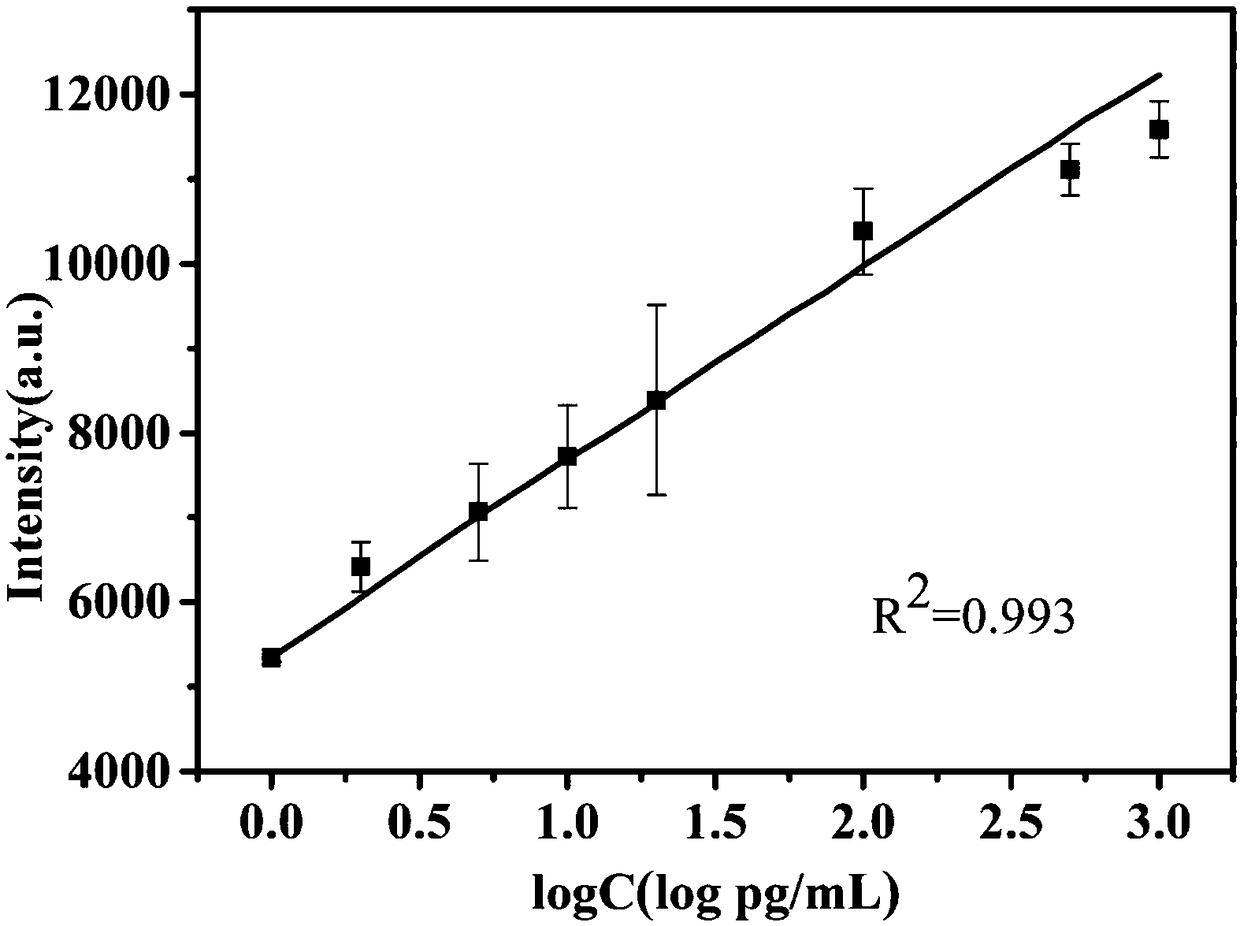Surface-enhanced Raman scattering aptamer sensor for detecting polychlorinated biphenyls and application
A Raman scattering nucleic acid and aptamer sensor technology, applied in Raman scattering, instruments, biological testing, etc., can solve the problems of complex sample pretreatment and low sensitivity, and achieve easy artificial synthesis and modification, high sensitivity, highly selective effect
- Summary
- Abstract
- Description
- Claims
- Application Information
AI Technical Summary
Problems solved by technology
Method used
Image
Examples
Embodiment 1
[0031] A surface-enhanced Raman scattering nucleic acid aptamer sensing and analysis method for PCB detection, the sensor is constructed through the following steps:
[0032] (1) All glass instruments used were soaked in aqua regia, cleaned with high-purity water, and dried for later use. 100 mL 0.01% (w / w) HAuCl 4 Bring to a boil, then add 1.5 mL of 1% (w / w) sodium citrate. Stir at 100°C for 15-20min until the solution turns wine red, that is, Au NPs are synthesized. Then add 800 μL of AgNO 3The solution (0.5%, w / w) was added to the boiling 100mL AuNPs solution, and 1mL of 1% (w / w) sodium citrate solution was added dropwise under stirring, then the solution was kept boiling for 1h, the heating was turned off, and at room temperature cool down.
[0033] (2) 10 mM 4-MBA was added to Au@Ag CS NPs to make the final concentration of 4-MBA 5 μM, and then reacted for a period of time. The nucleic acid aptamer solution with a concentration of 6 μM and the PCB72 solution with a c...
Embodiment 2
[0035] In order to ensure that this sensing analysis method exhibits the optimal SERS effect, the concentration of 4-MBA, the concentration of nucleic acid aptamer and the reaction time need to be optimized. The specific steps are: take 4-MBA with a concentration range of 1 μM-8 μM for Raman intensity test to obtain the optimal 4-MBA concentration; then change the concentration of nucleic acid aptamer, and consider the nucleic acid aptamer within the concentration range of 1 μM-10 μM The optimal concentration; Finally, consider the influence of different reaction times on the Raman intensity. The results showed that the optimal concentration of 4-MBA was 5 μM, the optimal concentration of nucleic acid aptamer was 6 μM, and the optimal reaction time was 25 min.
Embodiment 3
[0037] A good sensing analysis method also needs to ensure the reproducibility of the signal and the stability of the substrate. The specific experimental steps are as follows: prepare 5 batches of mixed solutions for Raman detection, select 10 points for each batch, and the relative standard deviation is 8.82%. The experimental results show that this sensing analysis method has good signal reproducibility and can ensure The reliability of the method; the experiment also conducted a Raman test on the same batch of substrates every 10 days, and the results proved that the substrates had similar Raman effects within 60 days, showing the stability of the substrates.
PUM
 Login to View More
Login to View More Abstract
Description
Claims
Application Information
 Login to View More
Login to View More - R&D
- Intellectual Property
- Life Sciences
- Materials
- Tech Scout
- Unparalleled Data Quality
- Higher Quality Content
- 60% Fewer Hallucinations
Browse by: Latest US Patents, China's latest patents, Technical Efficacy Thesaurus, Application Domain, Technology Topic, Popular Technical Reports.
© 2025 PatSnap. All rights reserved.Legal|Privacy policy|Modern Slavery Act Transparency Statement|Sitemap|About US| Contact US: help@patsnap.com


